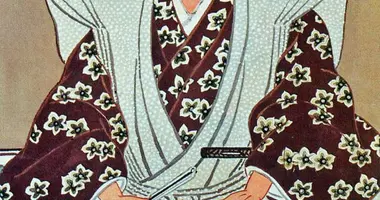Azuchi-Momoyama Japan History
- Early Japan until 710
- Nara Period 710-794
- Heian Period 794-1192
- Kamakura Period 1192-1336
- Muromachi Period 1336-1573
- Azuchi-Momoyama Period 1573-1603
- Edo Period 1603-1868
- Meiji Period 1868-1912
- Taisho and Early Showa Period 1912-1945
- Postwar Period 1945-Present
Azuchi-Momoyama Period 1573-1603 安土桃山時代

The Azuchi-Momoyama Period was a time of great castle construction in Japan; here Okayama Castle
Alternative dates 1568-1603 Azuchi-Momoyama.
Azuchi and Momoyama are, respectively, the names of the castles of Oda Nobunaga and Toyotomi Hideyoshi, who, in that order, brought the civil warring to an end and imposed unity on Japan. Azuchi Castle was built on the shores of Lake Biwa in 1579 with Fushimi Castle in Kyoto following in 1594.
The Azuchi-Momoyama era began as a contest among the most powerful daimyo to install an Ashikaga successor of their choice in the Muromachi Bakufu. The determined and ruthless daimyo Oda Nobunaga was successful in entering Kyoto and setting up Ashikaga Yoshiaki as the 15th Shogun.
He then embarked on the subjugation of the whole of the Japan, completing his massive castle in Azuchi in 1579 as a symbol of his will. Just three years later, however, in the midst of campaigning, he was overpowered by one of his own generals, Akechi Mitsuhide, and forced to commit seppuku at Honnoji Temple in Kyoto. Another of Nobunaga's generals, Toyotomi Hideyoshi, immediately attacked and defeated Akechi at the Battle of Yamazaki barely two weeks later.

The grounds of Honnoji Temple off Teramachi in Kyoto

The battlefield vest of Toyotomi Hideyoshi, Kodai-ji Temple, Kyoto, Japan
By 1584, Hideyoshi had gained complete control over his old master's domains, and over the whole of Japan by 1590. Although he ruled Japan from Osaka, day-to-day power was actually devolved to local government. Of the 18.5 million koku (a unit of rice production) that made up Japan, Hideyoshi was in direct control of 2 million. His deputy in the Kanto region, Tokugawa Ieyasu, held more, with 2.5 million.
Hideyoshi's major influence was putting an end to the insubordination that had characterized the preceding 100 years by setting the status quo in stone, requiring members of different classes to live apart, disarming the farmers, and demolishing many of the regional strongholds that had been built during the Warring States period. He installed himself at present day Osaka Castle, and also required the wives and heirs of daimyo to live in Osaka as "hostages" against any possible rebellion.
The merchant class grew considerably during this time, and with it flourished a new ornateness in art and decoration, characterized, for example by the painted byobu screen, in contrast to the more dour Muromachi culture. It was during the Azuchi-Momoyama era that the tea ceremony became popular, both Nobunaga and Hideyoshi being aficionados.
Towards the end of his life, Hideyoshi set out to conquer China and invaded Korea in 1592 in order to get to the Ming kingdom. However, the first attempt, while superbly organized, ended in eventual defeat for Japan due to certain blunders and the combined strength of China and Korea. It was followed by a second attempt in 1597 that, while well fought, was more strongly resisted - called off when Hideyoshi died in 1598.

Though now in ruins, the stone walls of Azuchi Castle make for a spectacular sight

Portrait of Toyotomi Hideyoshi, Kodai-ji Temple, Kyoto, Japan
Read more articles on Japanese history
Books on Japanese History
Court and Bakufu in Japan: Essays in Kamakura History
The Mongol Invasions of Japan, 1274 and 1281
Kublai Khan
A Modern History of Japan: From Tokugawa Times to the Present
Books on the History of Japan
Azuchi-Momoyama period: Read about the Azuchi-Momoyama period of the history of Japan from 1573 to 1603 A.D.









